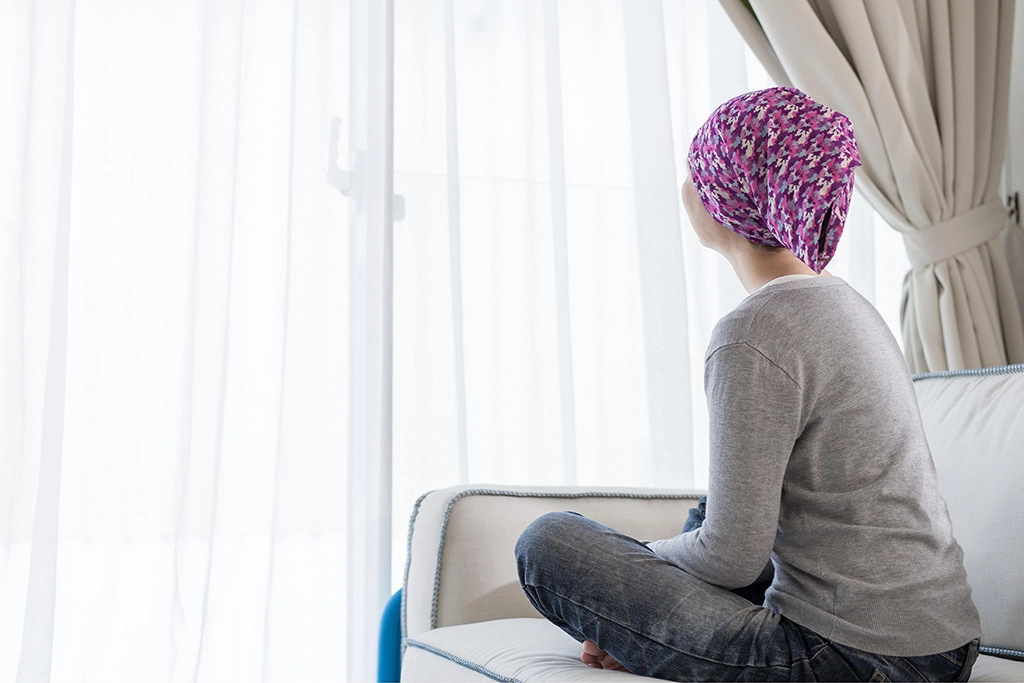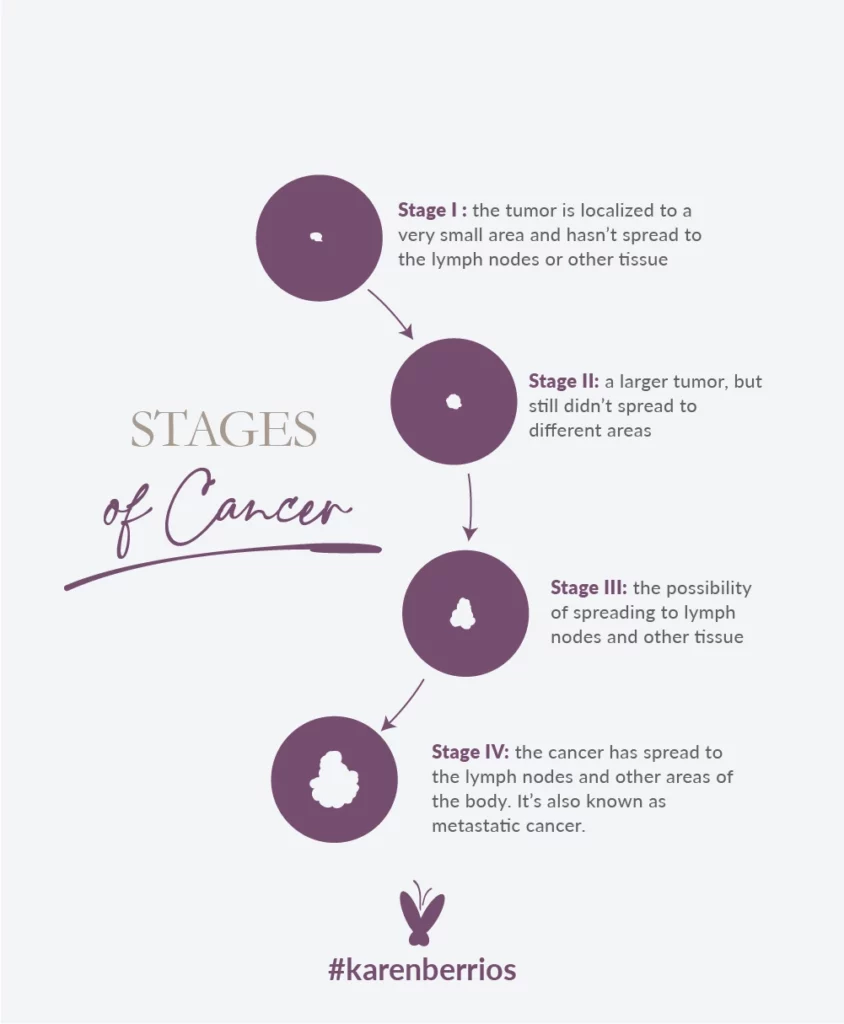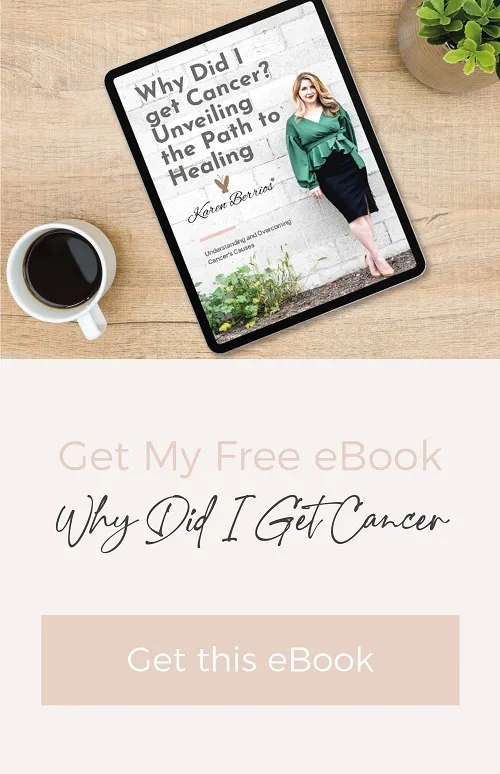

Cancer Explained: Causes, Symptoms, Treatments
Cancer Explained. We know it’s one of the most severe diseases one can have, we know it’s hard and sometimes impossible to cure, and we know it’s tough on not just the person diagnosed but their whole circle of people. But, what is this terrible disease, how does it start, and more importantly, how can we prevent it?
Cancer is a disease that develops when some of the cells in the human body start uncontrollably growing and spread to the other parts of the body where they shouldn’t be. It’s not caused by a bacteria or a virus that attacks the body and infects your healthy cells, it starts in your own cells that don’t follow their natural life cycle of dividing, growing old, and dying. Instead, these damaged cells begin rapidly multiplying, forming big masses (also known as tumors), which can be cancerous or benign.
Cancerous tumors begin attacking other cells and tissue, multiplying along the way and forming new tumors all over the body. When taken out, they can grow back and therefore make the treatment unsuccessful. Benign tumors, on the other hand, do not attack or invade other areas of the body. Still, they can grow quite large and cause pressure and other severe health complications.
Cancer Cells
Are your normal human cells that for some reason start acting differently than they should. They start rapidly multiplying without any brain signals and also ignore those which order them to stop multiplying or die (also known as apoptosis).
These cells don’t stop multiplying when they encounter other cells and move around the body very freely. They also signal blood vessels to start growing and nourishing tumors, supplying them with oxygen and nutrients to exist. Some even make energy from other nutrients in the body that healthy cells don’t usually use.
Additionally, they trick and hide from the immune system so that it doesn’t begin eliminating them and treating them as a pathogen. In some cases, cancer cells accumulate multiple changes in their own chromosomes, creating mutations and causing even more health complications down the line.
Causes
Cancer is considered to be a genetic disease, meaning it’s caused by a change in your genes. That being said, some cancers are thought to be hereditary while others are not. Why these genetic changes occur is still mostly unknown. What we do know is that they occur due to specific DNA damage caused by harmful environmental substances. Some of these substances are unfortunately out of our control as they’re a part of our environment, but others such as ultra-processed foods, overexposure to the harmful sun rays, and other forms of toxins are. These factors cause inflammation which studies show is a major contributor to tumor growth.
Basically, whatever causes ongoing inflammation could benefit cancer spread and growth. From harmful food additives, smoking, and ingesting hydrogenated fats to myriad chemicals and excessive stress. It’s important to understand how these factors contribute to inflammation and prevent them from wreaking havoc on your body.
Research has shown three main types of genes that undergo genetic changes which contribute to this disease. These are known as proto-oncogenes, tumor suppressor genes, and DNA repair genes. The discovery that specific mutations commonly occur in many different types of cancer helped pave a path for better and more successful treatment that can potentially help many people suffering from this terrible disease.
Although anyone can develop cancer, those at a higher risk include people older than 65, those with certain lifestyle habits like smoking, overexposure to sun, and obesity, family history of cancer, own untreated chronic medical conditions with chronic inflammation as a side effect, hormonal therapy treatments, and those who are overly exposed to environmental toxins like nuclear plants and compounds.
Stages
There are four main stages of cancer which are determined by a few factors such as the size and location of the tumor:
- Stage I – the least severe stage of cancer where the tumor is localized to a very small area and hasn’t spread to your lymph nodes or other tissue
- Stage II – a larger tumor, but still didn’t spread to different areas
- Stage III – the possibility of spreading to lymph nodes and other tissue
- Stage IV – the most severe stage where cancer has spread to your lymph nodes and other areas of your body.
There is also Stage 0 which is mostly considered to be precancerous because it’s still localized to the area in which it started. Obviously, stage IV is the hardest one to treat and more often than not takes a fatal turn. That being said, the research has moved mountains in the last decade, coming up with experimental treatments which yield almost magical results and it’s only a matter of time when cancer will become a disease we’ll stop being afraid of.
5 Types of Cancer
- Carcinoma – the most common type of cancer that affects your organs and glands, such as the skin, breasts, lungs, colon, and pancreas.
- Sarcoma – affects your soft or connective tissues which include your muscles, fat, bones, cartilage, and blood vessels.
- Melanoma – a type of cancer that develops in the cells that pigment your skin.
- Lymphoma – affects your lymphocytes or white blood cells.
- Leukemia – a type of cancer that affects your blood.
Symptoms
Generally, cancer does not show up as a certain recognizable combination of symptoms. These differ from cancer to cancer and from person to person, but in most cases, the symptoms don’t begin to show until it’s spread.
Some of the most common symptoms include:
- Pain
- Rapid and unexplained weight loss
- Tiredness and fatigue
- Changes on your skin
- Intermittent fever that only occurs during the night
- Unusual lumps around your lymph nodes
- Sores that don’t go away
- A mole that changes in size, shape, or color
- Hoarseness and difficulty swallowing
Treatments
Depending on the type of cancer and a variety of other factors, there might be only one or more potential cancer treatments. It’s normal to feel overwhelmed, scared and confused about all the options presented to you. Your doctor will most likely offer you a combination of a few different treatments while also telling you about experimental therapies that might be beneficial in your case. These are some of the most common options used to treat cancer:
- Chemotherapy – a type of treatment that uses cytotoxic (cell killing) drugs that literally kill tumor cells. There are more types of chemotherapy depending on your specific cancer type, location, size, and the state of your immune system.
- Radiation Therapy – in addition to chemotherapy, radiation is the most commonly used cancer treatment. It’s often combined with chemotherapy as well as other treatments. It uses high doses of radiation in order to successfully kill cancer cells and shrink tumors.
- Hormone therapy – a type of cancer treatment used in specific cancers driven by hormonal changes such as breast cancer and prostate cancer.
- Hyperthermia – a unique treatment of local hyperthermia that elevates the temperature of your body tissue to 113 °F, helping damage and kill cancer cells without harming your normal tissue.
- Immunotherapy – a variety of cancer treatments that support and boosts your immune system, helping it fight against cancer. There is a plethora of types of immunotherapy, from adoptive cell therapy and immunomodulators to virus therapy and antibody therapy.
- Photodynamic Therapy – another unique cancer treatment that uses a special drug that’s activated by light in order to kill cancer and other abnormal cells.
- Stem Cell Treatment – stem cell transplants for those people whose stem cells have been destroyed, either by cancer or another cancer treatment.
- Surgery – a type of surgery that results in the removal of the tumor.
- Targeted therapy – a form of treatment that targets factors and causes that contribute to cancer growth.
A combination of these therapies is yielding more and more positive results every day, with stories of miracle remissions and no signs of tumors. In addition to a plethora of experimental trials you could potentially be a great candidate for, it’s possible you could cure this awful disease. You just need to make the first step.

Cancer Prevention
It’s important to know that there are many things you can do to actively prevent cancer from developing and causing long-term health problems. These tools include changes in your diet and lifestyle to lower your stress levels and maintain a healthy weight, regular screenings so you can treat precancerous conditions before they even started forming, limiting or ditching smoking, overexposure to the sun, and even alcohol.
Additionally, certain viruses and bacteria are known to increase your chances of developing cancer. These include human papillomavirus or HPV, Hepatitis B and C, Epstein-Barr virus, and Helicobacter pylori.
Is There a Vaccine for Cancer?
Although there is no actual vaccine for cancer, two vaccines that prevent infection by cancer-causing agents do exist. They have even been developed and approved by the U.S. Food and Drug Administration (FDA).
One vaccine prevents infection caused by the hepatitis B virus and the other protects against infection from HPV which can cause cervical cancer.
Final Thoughts
We are living in a world where more and more people each day are diagnosed with some form of cancer. And although we can basically call it an epidemic, it’s not contagious and it cannot spread from person to person. It’s crucial to know how to implement a healthy diet and lifestyle
habits can have a great, positive effect on the prevention and even treatment of cancer.
This terrible disease is a hard burden for you and everyone that’s close to you, making it a joint fight. A good support system is one of the most important factors in the success of your cancer treatment, together with keeping the faith and hope in getting cured. There’s great power in positive thoughts, prayers, and mantras.

hey there
I'm Karen!
I have found my cancer journey to be a positive and profound transformational experience. I’m inspired to share my healing journey here, and trust you’ll find hope, encouragement and purpose as you discover the healing power that lies within you.
Join
The Mailing List!
By signing up for my newsletter, you agree with our Privacy Policy and Terms & Conditions.


